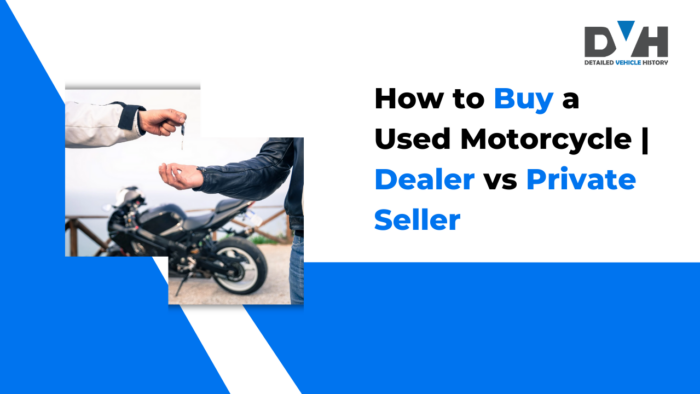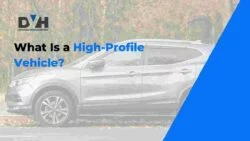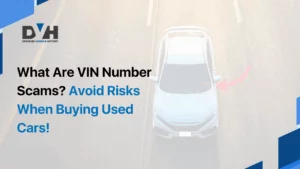When it comes to buying a motorcycle, buyers have two main options: Buying from a dealer or from a private seller – both of which are huge decisions, especially for a new rider.
Each option has its advantages and disadvantages that buyers should carefully consider. Buying a bike from a dealer can provide more peace of mind but comes at a higher price due to the price markup. On the other hand, purchasing a used bike from a private seller can save you money but requires more due diligence on the buyer’s part.
This article looks closely at how to buy a used motorcycle from dealers and private sellers. You will also understand the pros and cons of each and get a buying checklist. Let’s get started!
Buying a Used Motorcycle from a Private Seller
Purchasing a used motorcycle from a private seller involves buying a bike directly from an individual rather than through a dealership. This can be a great way to find a good deal, especially with limited funds.
It, however, requires more due diligence on the buyer’s part to avoid falling into the hands of scammers and to ensure they are getting a safe, reliable motorcycle with a clear title. A key step is performing a motorcycle vin check, which reveals important details about the bike’s history to help you decide.
Pros of Buying a Motorcycle from a Private Seller
- Lower prices compared to dealerships, as they don’t have overhead costs factored in.
- Potential to negotiate the price more than at a dealer
- Ability to inspect the motorcycle in person and test ride it before purchase
- Opportunity to buy a rare or unique bike that may not be available at dealers
Cons of Buying from a Private Seller
- There is a higher risk of buying a motorcycle with issues, as private sellers are not required to inspect or guarantee the bike like dealers.
- Potential for the motorcycle to have a salvage title, outstanding loans, or be stolen property if the seller is dishonest
- Responsibility of the buyer to handle all paperwork, registration, and taxes rather than the seller
- There is no warranty or return policy if issues are discovered after the purchase.
- Possibility of the seller not having the motorcycle’s title, making transfer difficult
- Unlike dealers, private sellers cannot offer on-the-spot financing.
To mitigate the risks, buyers should thoroughly inspect the motorcycle, check the VIN and title, request maintenance records, and get a pre-purchase inspection by a mechanic.
Paying with a secure method like escrow can also protect the buyer. With proper precautions, purchasing a used motorcycle from a private seller can be a great way to find a good deal on your desired bike.
Now let’s understand what buying a used motorcycle from a dealer means.
Read also: New vs. Used Motorcycles: Which Bike Should You Buy?
Buying a Used Motorcycle from a Dealer
Purchasing a used motorcycle from a dealership involves buying a used or pre-owned bike from a business that sells motorcycles.
Dealers typically inspect and service the bikes they sell and may offer warranties or return policies to provide buyers with more assurance and protection.
Pros of Buying from a Dealer
- Motorcycles are inspected and serviced by the dealer, providing more confidence in the bike’s condition.
- Dealers usually offer some form of warranty or return policy, giving buyers more protection.
- Dealers handle all the paperwork and registration, making the process more convenient for the buyer.
- Dealers have a wider selection of makes and models available compared to private sellers.
- Dealers may offer financing options tailored to the buyer’s needs
- Buyers have the option to trade in their current motorcycle towards the purchase.
Cons of Buying from a Dealer
- Prices are typically higher at dealerships compared to private sales, as dealers factor in overhead costs.
- Less room for negotiation on price compared to buying from a private seller.
- Dealers may not have the same level of expertise on a specific motorcycle model as private sellers who own the bike.
- Buyers may have to pay more for dealer-added accessories or customizations
While buying from a dealer comes with a higher price tag, it provides more assurance and protection for the buyer. Thoroughly researching the dealer’s reputation and the motorcycle’s history is still important to ensure a smooth and satisfactory purchase experience.
At the end of the day, you still need to have some background knowledge of what it means to buy a used motorcycle. The fact that it is not brand new means you are taking on a risk, and being cautious can help mitigate that risk during your used bike purchase.
That is why you need to remember some basic tips while searching for the perfect used motorcycle.
Tips for Buying a Used Motorcycle
Buying a used motorcycle can be a great way to get a good deal, but it’s important to be cautious. Here are some tips to help you make a smart purchase:
1. Do Your Research
Before shopping, research different motorcycle models to find one that fits your needs and budget. Look up reviews, reliability ratings, and common issues for the models you’re interested in.
You can even look it up online and check forums. Harley Davidson’s forums, for example, can point you in the right direction. Find out the overall reliability of the bike you are interested in and pay close attention to its downsides.
You must also research the dealer or private seller you want to buy from. You can find private sellers on sites like eBay and Craigslist or search directly on Bing or Google. Local dealers are relatively easy to find, but do a serious background check on them.
2. Set a Budget
Determine how much you’re willing to spend, including additional costs like insurance, registration, and potential repairs. Stick to your budget to avoid overspending.
During the purchase process, you may be tempted to get add-ons and extras or even purchase a more expensive motorcycle you would struggle to pay for.
3. Check the Bike’s History
Ask for the motorcycle’s history report if you’re buying from a private seller or even a dealer. This can tell you if the bike has been in any accidents, had multiple owners, or has any outstanding liens.
When the seller or dealer cannot provide one, there’s no need to panic. Our VIN check tool can always offer an up-to-date vehicle history report.
Once you get the report, here are factors you should pay attention to:
- Accidents and damage records
- Current mileage
- Title brand records like salvage or rebuilt titles
- Lien and loan records
- Service history.
4. Inspect the Motorcycle
Although a vehicle history report can give clear information on a vehicle’s condition and reliability, it doesn’t replace an inspection.
Thoroughly inspect the bike for any signs of damage or wear. Check the frame, tires (for pilling or feathering), brakes, fuel tank, clutch, and engine.
- Look for rust, leaks, or any unusual noises.
- Ensure all lights, mirrors, turn signals, and horns function correctly.
- Listen to the engine and exhaust for any knocking, rattling, or rough idling sounds that could indicate issues.
- Check the oil level and color – it should be a dark brown, semi-translucent fluid.
- Look at the fork seals. They should be clean and smooth.
- Inspect the brakes to ensure they operate smoothly and bring the bike to a complete stop.
- Check the suspension by sitting on the bike and bouncing up and down on the front and rear to ensure proper damping.
- You’ll most likely buy a bike during the day, so remember to test the headlights on both high and low beams!
- Also, pay attention to the levers. Levers often “curl” when there has been an accident or damage in the past. If the levers look like they’ve been cut or reshaped, there has definitely been significant damage in the past.
If you’re not confident in your inspection skills, consider hiring a mechanic to do a professional inspection.
5. Take a Test Ride
Always take the motorcycle for a test ride. Pay attention to how it handles, the condition of the brakes, and any strange sounds. Make sure it feels comfortable and meets your riding expectations.
One trick you can use here is to instruct the seller or dealer to leave the bike cold before you get there for the test drive.
Hiding starting and running problems is much easier on a hot bike than on a cold one. Check the jugs and pipes and ensure they’re cold before the test drive.
Now, try to start the bike. If there are any problems or weird sounds, you can tell that’s not the bike for you.
6. Verify the VIN
Check the motorcycle’s Vehicle Identification Number (VIN) to ensure it matches the VIN on the title. You can also check different parts of the bike for inconsistencies, such as the VIN on the engine and frame.
This can help you avoid stolen vehicles or title fraud. Title fraud happens when a seller alters the vehicle title or VIN to misrepresent the actual condition of a vehicle (or motorcycle, in this case.)
Find out more about where the VIN number on a motorcycle is located.
7. Negotiate the Price
Don’t be afraid to negotiate the price when buying a motorcycle. Use your research on the bike’s value and any issues you found during the inspection as leverage to get a better deal.
8. Understand the Paperwork
Ensure all the necessary paperwork is in order. This includes the title, bill of sale, and any warranty documents. Ensure the title is clear and can be transferred to your name without issues.
9. Consider Additional Costs
Remember to consider additional costs like insurance, registration, and potential bike repairs or upgrades. These can add up quickly, so plan accordingly.
10. Trust Your Instincts
Lastly, trust your instincts if something feels off or too good to be true. It’s better to walk away from a deal than to end up with a problematic motorcycle.
By following these tips and doing your due diligence, you can find a used motorcycle that meets your needs and budget while minimizing the risks of buying a problem bike. Taking the time to inspect and thoroughly verify the bike’s history is crucial to making a smart purchase.
The Bottom Line
Buying a used motorcycle can save money, but choosing wisely is essential. Dealers offer peace of mind with warranties and inspections at a higher price.
Private sellers often have lower prices and more room for negotiation, but you’ll need to be extra careful with inspections and paperwork.
Research thoroughly, set a budget, check the bike’s history, and always take a test ride. By being diligent and cautious, you can find a great bike that suits your needs and budget in the used motorcycle market.
Happy riding, and stay safe!










